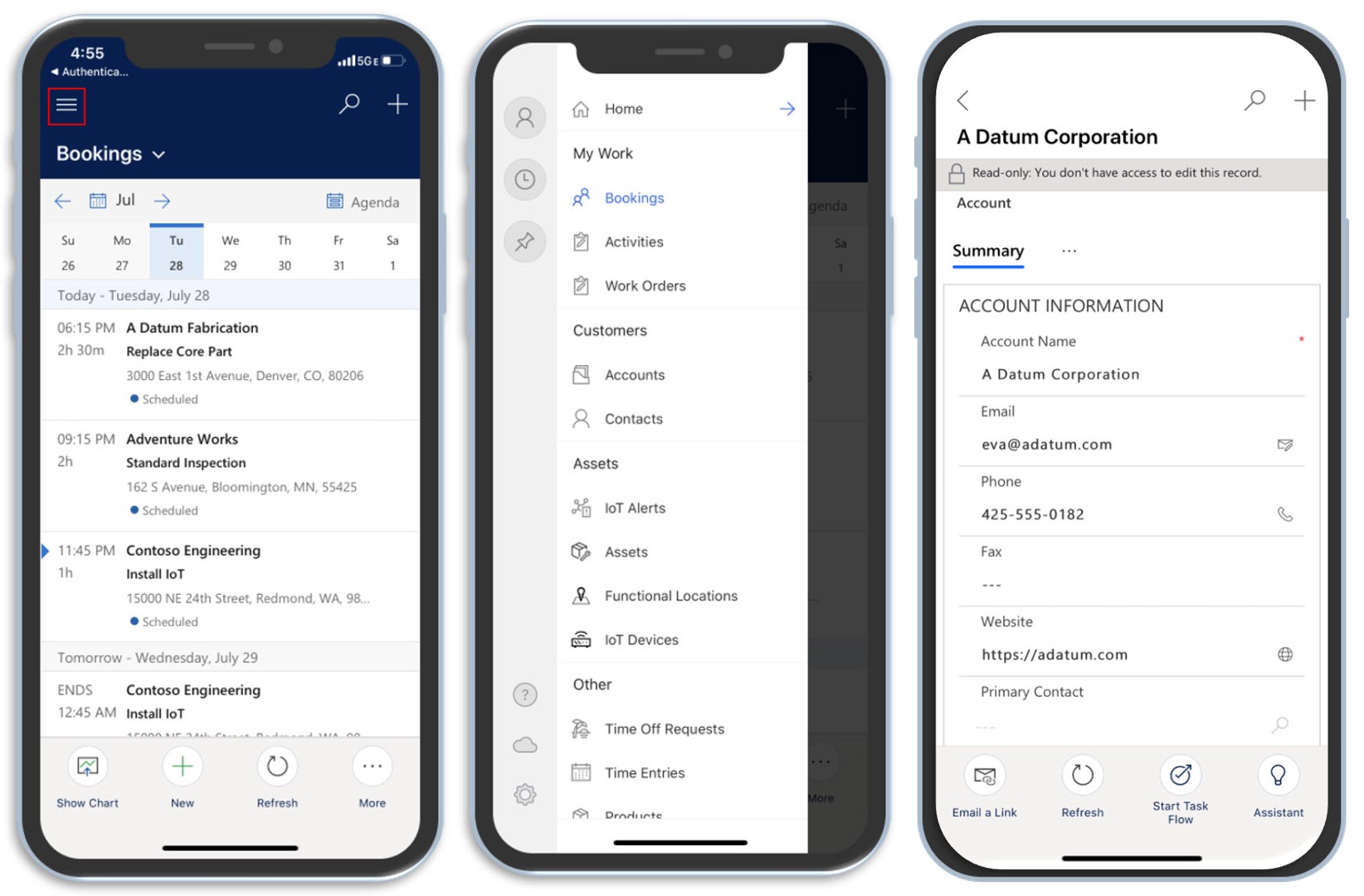Introduction
Microsoft Dynamics 365 Field Service Mobile application is built on Microsoft Power Platform and provides field agents with the tools that they need to service customers in the field. The application allows agents to access important information, such as work orders that are assigned to them, and manage their schedule, service customer assets, and more.
Along with the included functionality, organizations have the option to customize and configure the application to use the features that work best for their organization. For example, you might configure the application to support barcode scanning. This feature allows frontline workers in the field to scan and store information, such as serial numbers for items that they're installing.
Depending on their needs, organizations can enable and configure multiple features, including the ability to:
Create offline profiles that determine which data can be taken offline.
Audit location to help schedulers know where workers are.
Enable push notifications to notify and remind workers of important information.
Configure barcode scanning.
In addition to the preceding items, an organization can modify the information that is displayed on forms and views in the application or modify how people navigate the application. Dynamics 365 Field Service Mobile app is built on Microsoft Power Platform, which means that administrators and developers can use the same tools that are available for configuring Dynamics 365 and Microsoft Power Apps.
While this module will examine the process for modifying the mobile application's forms, views, and the site map, you can use Microsoft Power Platform in many other ways to tailor the application.
The following table provides some examples of how Microsoft Power Platform can be used.
| Area | Microsoft Power Platform reference docs |
|---|---|
| Views | Create and edit public or system model-driven app views Customize entity views |
| Custom IFrame integration | Use IFrame and web resource controls on a form |
| Custom HTML pages | Webpage (HTML) web resources |
| Commands on forms and views | Command bar or ribbon presentation, Define ribbon actions, Define ribbon display rules |
| Event handling (On Save, On Load, and so on) | Events in forms and grids in model-driven apps |
| Business logic / JavaScript | Apply business logic using client scripting in model-driven apps using JavaScript |
| Client scripting | Apply business logic using client scripting in model-driven apps using JavaScript |
| Mobile Offline supported capabilities | Mobile offline capabilities and limitations |
| Custom controls | Additional custom controls for model-driven apps |
| Canvas apps | Embed a canvas app on a model-driven form |
The rest of this module will examine many of the previously mentioned items in more detail and provide guidance on how to customize and configure the mobile application.
